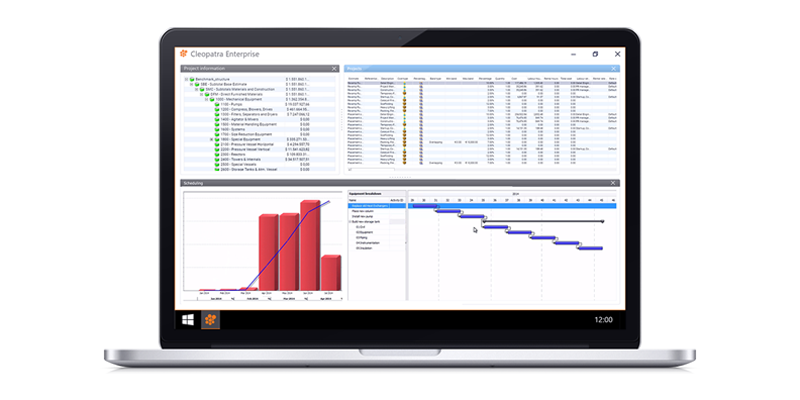After defining your turnaround scope, you need to gather the work to be done in work packages. For the successful implementation of a turnaround it’s key to prepare a detailed work package planning, containing a list of activities and required tools and materials needed to carry out the job.
As the saying goes: ‘’A good beginning is half the task’’. However, it seems that this is easier said than done. We notice that companies are facing various challenges while preparing work package planning, which leads to inefficient execution of the turnaround.
We listed the 4 most common challenges so you can learn from them.
1. Achieving turnaround scope clarity
At the start of your turnaround project, you have to define the scope of the turnaround. Achieving scope clarity and ensuring effective scope management is one of the greatest challenges in turnarounds. You need to decide what scope items should be executed and how. What do you expect from a specific scope item? What do you expect from a specific work package? And is it clear for the contractor or the person in the field what’s expected from them?
It seems very obvious, but achieving scope clarity is essential for effective work package planning and it will increase your turnaround performance.
2. Re-using historic work packs
Shutdowns and Turnarounds generally are quite repetitive. You can retrieve about 80% of the information required for work packages from previous projects. For example, a safety valve overhaul is a scope item that will be in your work package time over time. It’s something you work with multiple times, during the current turnaround and the turnarounds in the future.
Companies find it hard to re-use historic work packs because oftentimes data isn’t stored at a centralized or organized location. By storing and having access to historical data in an organized environment you are able to reduce a lot of effort. You can reuse vital documentation such as P&IDs, isometrics, and block diagrams, which means you don’t have to retrieve and rebuild your entire work packages. So, no need to reinvent the wheel time over time resulting in less re-work and more efficient work package management.
3. Creating common instructions and language on resource and labor norm management
Regularly, there are no clear data sets used by work package planners to create work packages. So, the activities involved in a scope item or the number of hours to finish a specific work package are often based on personal knowledge, books or communication with other departments.
It’s key to create common instructions and language on resource and labor norm management as it results in standardization. This will lead to a more consistent breakdown and description of the work, which improves communication and the overall STO performance.
4. Integrating turnaround work packages with other project controls tools
In project execution, oftentimes multiple tools and resources are used at the same time. For instance, a company could be using Primavera P6 as a scheduling solution, and SAP as ERP system. When using multiple systems, you want to prevent spending too much time on gathering and formatting incoming data. The larger your projects become, the more effort it will take. That’s why it can be valuable to have automated interfaces between different systems. It speeds up your workflow, prevents mistakes, and makes sure you can report the project’s performance on time for decision making.
An integrated turnaround management software allows you to import and export data from different systems. Integrating the output of those systems in one single system will result in less time spent on handling data, so you can spend your valuable time on the things that matter.
Conclusion
By planning a turnaround on time with detailed work packages, a streamlined execution can be achieved.
The video in this blog is part of the on-demand webinar: ”Turnaround Work Package Management: From Preparation to Execution”. Watch the full on-demand webinar in which Cleopatra Turnaround management experts, will help you identify the importance of a full work package planning for your shutdowns and turnarounds using advanced technology and tooling.
Turnaround Work Package Management: From Preparation to Execution
WEBINAR ON-DEMAND
This webinar will help you identify the importance of a full work package planning for your shutdowns and turnarounds using advanced technology and tooling.

Turnaround Work Package Management
Cleopatra Enterprise Software
Improve the efficiency of turnaround work planning with Cleopatra Enterprise. Complete your shutdowns and turnarounds on time and within budget.




